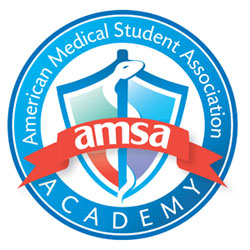On November 22, several hundred premedical and medical students gathered at the Northwestern University Feinberg School of Medicine for the American Medical Student Association (AMSA) Training Grounds. It was the second Training Grounds sponsored by AMSA this fall, with the topic of “Leading the Change in the Culture of Medicine.”
Although a popular topic being addressed throughout all of medical education, Dr. Jeff Koetje, AMSA’s Education and Research Director, clarified that AMSA Training Grounds is unique. “These conferences provide a safe place for students to learn about these topics away from their home institution,” Dr. Koetje said. “Students can come here and discover that they are not alone.”
In the keynote address, Dr. Shannon Brownlee of the Lown Institute, a health policy nonprofit located in Boston, spoke about the myriad of issues plaguing the American health care system, including the absurdly high cost of health care in this country and the problem of overtreatment. “These endemic and pervasive issues will require a change that is nothing short of revolutionary,” Dr. Brownlee said. The key themes of her talk were innovation and imagination, and she emphasized that “the road to changing health care starts with imagining a better system.” She encouraged students to dream of a system “that allows the right treatment and care.” She added that the “quintessential failure of modern health care” has been “the loss of the patient as a human being.”
Dr. Brownlee was followed by Dr. Vikas Saini, president of the Lown Institute. He reiterated the need for students to put patient care at the center of their education. “Whatever activism is worth,” he said, “the real certainty lies in the exam room with the patient, one-on-one.” He spoke about issues with pharmaceutical, medical device and insurance companies having a stake in health care, which has caused a shift in priorities away from patient health. Despite the brokenness of legislation, Dr. Saini added, “the theater of action is not in [politics] but in the clinics and in the community.” He closed by offering tangible ways that medical students can begin seeking change in their local environments.
After the keynote, a panel of speakers from the University of Illinois Chicago (UIC) engaged a group of students in the first session, entitled “There is an ‘I’ in Medicine.” The session addressed issues of interprofessionalism in medicine, exploring historical problems with ego and the training of different health professionals in a vacuum. The speakers discussed how they have implemented interprofessionalism at UIC and why it is important. “The purpose,” said Valerie Gruss, from UIC’s College of Nursing, “is to prepare for the future workforce as part of a collaborative team. That’s how the real world works.”
In another educational session, the School for Designing a Society, a “project of teachers, performers, artists and activists” turned the traditional concept of a workshop on its head, instead inviting audience participation and sharing their message through skits, songs and art. Their central message was about care, which they defined as “a decision to temporarily become part of another living system’s structure.” They demonstrated this in several skits through the persona of an unnamed medical “Hero,” a caricatured medical professional intent on working in isolation and trying to solve problems himself. In the skits, this individual eventually accepts the need to collaborate and to put “care” at the center of health care.
When I asked Dr. Koetje why conferences like this are important for medical students to attend, he focused on the purpose of the conference. “What we try to do is ask the question of students: what do you want your profession to look like?” he said. “We want students to recognize they can start small — we are not going to change the system overnight.”




